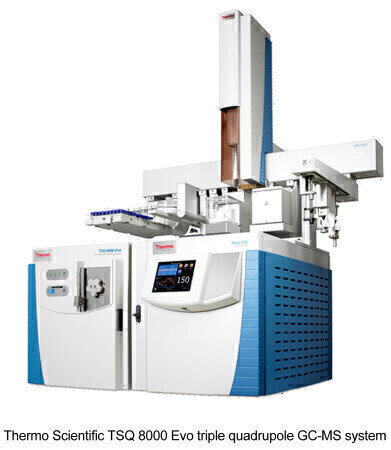Environmental Laboratory
EU Gives the Go-Ahead for GC-MS/MS to Confirm Levels of Dioxins
Sep 03 2014
European laboratories testing feed and food for dioxins and dioxin-like substances now have lower-cost, smaller-footprint alternatives to high-resolution mass spectrometers (HRMS) for confirming levels of the toxic contaminants, thanks to a new European Union regulation.
Thermo Fisher Scientific (USA) worked closely with national reference labs (NRLs) in the European Union to support the development of the new regulation, known as Commission Regulation (EU) No. 709/2014, which permits use of gas chromatograph-triple stage quadrupole mass spectrometers (GC-MS/MS) for confirmation.
EU regulations previously permitted the use of GC-MS/MS only to screen samples for dioxins, a group of persistent organic chemicals that can cause reproductive and developmental problems, damage the immune system, interfere with hormones and also cause cancer. Benchtop GC-MS/MS instruments are widely used throughout the analytical community, compared to floor-standing GC-HRMS systems, which are used for more specialised applications.
“Recent advances in GC triple quadrupole MS technology allow it to be used as a tool to reliably measure these substances at the maximum permitted levels controlled by EU regulations,” said Dr. Esteban Abad- Holgado, Consejo Superior de Investigaciones Scientificas (CSIC); Barcelona, Spain. Dr. Abad-Holgado is a leading researcher of persistent organic pollutants (POPs) and a key contributor to the new EU regulation. “GC-HRMS magnetic sector technology continues to be the gold standard for analysing the lowest levels of dioxins and dioxin-like compounds, but GC-MS/MS systems work very well for food safety testing for dioxins at EU levels.”
Dr. Abad-Holgado worked with Thermo Fisher to evaluate the recently introduced Thermo Scientific TSQ 8000 Evo GC-MS/MS system in light of the new regulation, using samples previously analysed using GC-HRMS.
“For laboratories that still require the highest levels of performance, we offer an excellent GC-HRMS instrument,” said Paul Silcock, marketing manager, GC-MS for Thermo Fisher Scientific. “We’re now positioned to also offer a top GC-MS/MS platform for confirmatory dioxin analysis which has been recently validated against the new regulatory criteria.”
Thermo Fisher also manufactures the Thermo Scientific DFS GC-HRMS for customers requiring additional performance at ultra-trace background levels.
Thermo Fisher also worked with the UK National Reference Laboratory for Contaminants in Food and Feed at the Food and Environmental Research Agency to evaluate GC-MS/MS for confirmation of dioxins.
“Thermo Fisher has helped us to evaluate the suitability of using GC-MS/MS for official food and feed control of dioxins,” said Dr. Martin Rose of the UK NRL. “We wanted to establish whether or not this technique was at a stage where it could meet the highly demanding analytical criteria for dioxin analysis, which previously allowed only HRMS to be used as a confirmatory technique.”
Digital Edition
IET 34.2 March 2024
April 2024
Gas Detection - Biogas batch fermentation system for laboratory use with automatic gas analysis in real time Water/Wastewater - Upcycling sensors for sustainable nature management - Prist...
View all digital editions
Events
Apr 30 2024 Melbourne, Australia
Apr 30 2024 Birmingham, UK
May 03 2024 Seoul, South Korea
May 05 2024 Seville, Spain
May 06 2024 Minneapolis, MN, USA


















